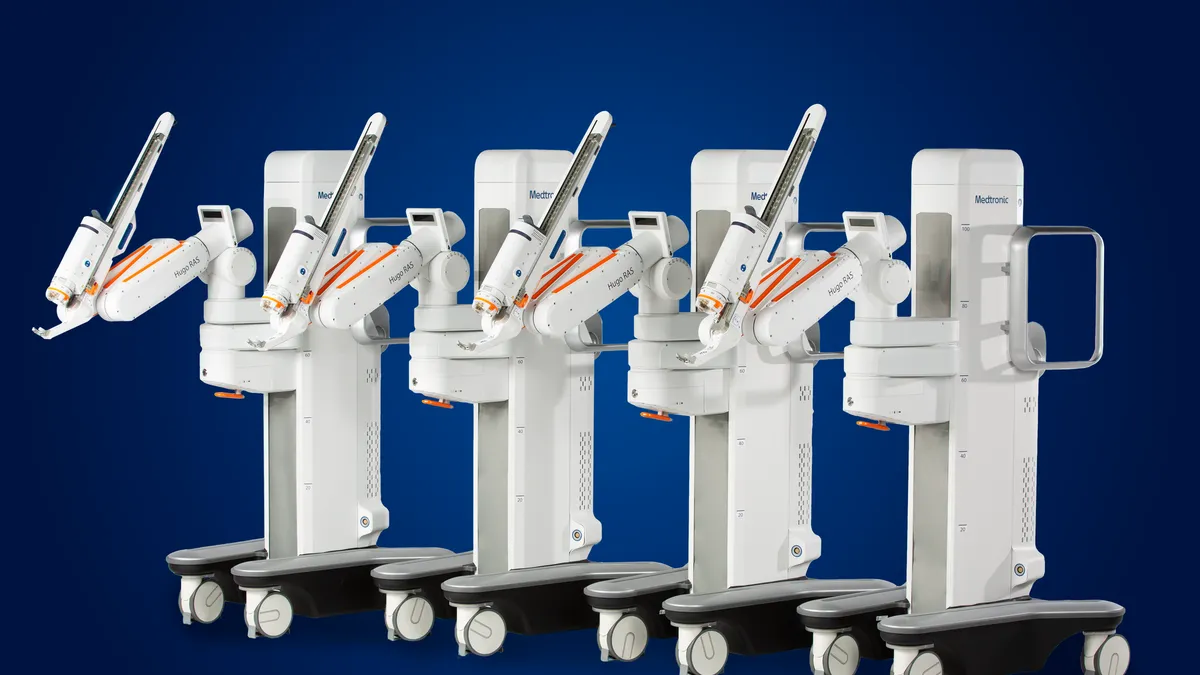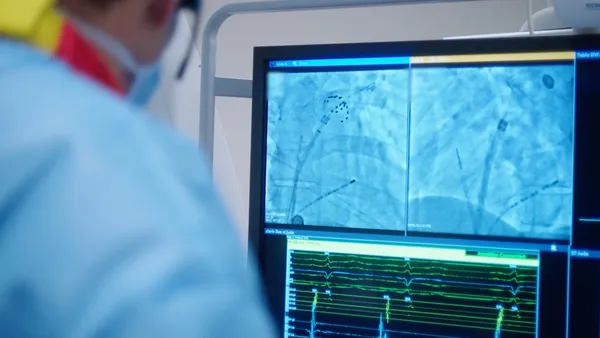Dive Brief:
- Medtronic has enrolled the first patient in a U.S. clinical trial of its Hugo robotic-assisted surgery system, advancing its push to challenge Intuitive Surgical.
- The clinical trial will enroll up to 122 patients at six sites in the U.S. to evaluate the use of Hugo in urologic procedures, a field in which Intuitive’s da Vinci robot is already well established.
- Facing an entrenched incumbent, Medtronic delayed the Hugo program to make changes in light of surgeon feedback, but now thinks it has a device that can make its mark on the sector.
Dive Insight:
Hugo is already on the market in some countries, but made a slow start commercially. Medtronic cut its sales forecast in 2021, slashing the midpoint of its range from $75 million to $30 million. Sales are now starting to ramp up, Medtronic said in its most recent financial results, but supply chain and manufacturing problems in the U.S. mean the company missed the fall 2022 launch date target it set itself in 2020.
Now, Medtronic has belatedly reached the next hurdle in its race to the U.S. market. Dr. Michael Abern recently carried out the first procedure in Medtronic’s investigational device exemption trial at Duke University Hospital, marking the start of a push to gather clinical data to support U.S. market entry.
At this stage, it is unclear how long it will take Medtronic to bring Hugo to market in the U.S. Asked for a timeline on a recent conference call with investors, Bob White, president of Medtronic’s medical surgical portfolio, demurred, saying that the timing “depends upon the agency and the process there.” White said Medtronic is “excited to be the number two player in this space.”
The timing of the launch will dictate the market conditions that Hugo faces. In recent quarters, Intuitive has seen delays to equipment purchases as hospitals reassess their capital budgets, but surgery volumes are rising. The impact of hospital staff shortages on robotics is mixed. Acute pressures cause volumes to fall, but overall the situation can favor robotics because it reduces staffing requirements post-surgery.










